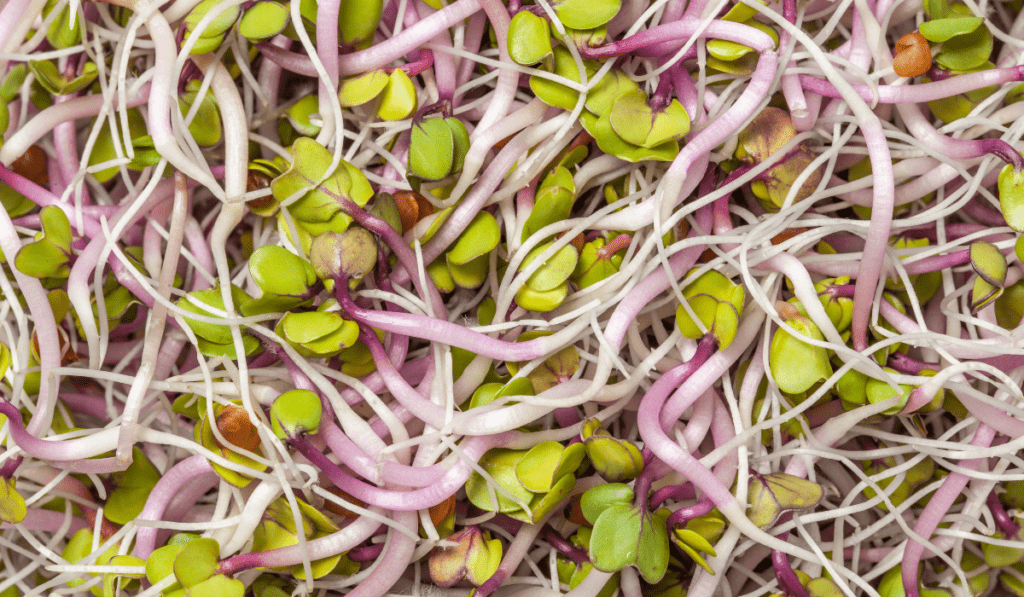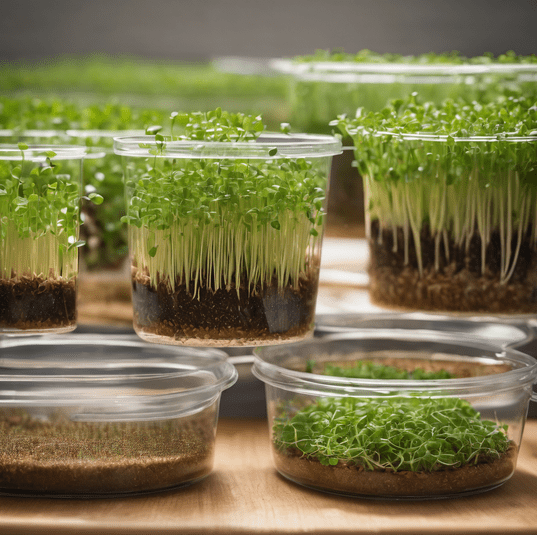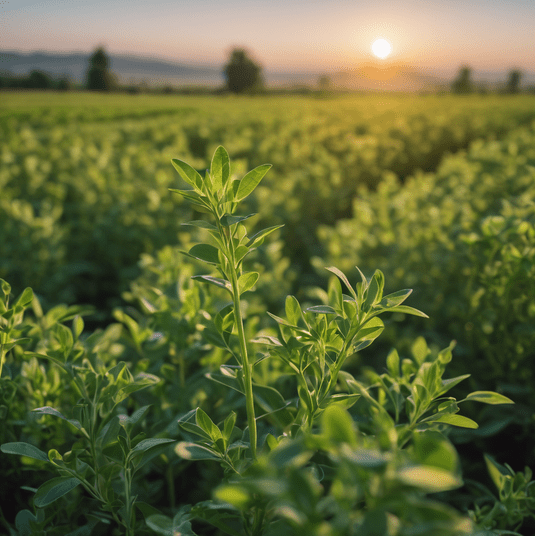Ever wondered how to unlock the full potential of alfalfa seeds? Nurturing these tiny powerhouses requires more than just planting. Discover the secrets to successful alfalfa seed care in our latest guide. From germination tips to optimizing growth conditions, we promise to equip you with the knowledge to foster thriving alfalfa crops. Your journey to becoming an alfalfa seed caretaker starts here.
Importance of Proper Care:
Caring for alfalfa seeds lays the foundation for a successful and robust crop. From germination to harvest, each stage requires careful attention to detail. Alfalfa’s role extends beyond being a valuable source of forage; it acts as a natural nitrogen fixer, enhancing soil fertility and structure. Additionally, the nutrient-dense leaves make it a sought-after feed for livestock, contributing to healthier animals.
Proper care ensures optimal germination rates, vigorous plant growth, and a bountiful harvest. Whether you’re a seasoned farmer, a livestock owner, or a gardening enthusiast, understanding the importance of providing the right conditions for alfalfa seeds will set the stage for a rewarding cultivation experience.
In the sections that follow, we’ll delve into the intricacies of caring for alfalfa seeds, covering everything from selecting the right seeds to post-harvest considerations. Whether you’re considering alfalfa for livestock feed, soil improvement, or personal consumption, this guide will equip you with the knowledge to nurture thriving alfalfa plants from seed to harvest.
1. Selecting Quality Alfalfa Seeds
Characteristics of Good Alfalfa Seeds: Choosing the right alfalfa seeds is a critical first step in ensuring a successful crop. Look for seeds that are uniform in size, free from impurities, and have a high germination rate. Quality alfalfa seeds are often plump, firm, and have a distinct dark color. Check for a reputable seed label that provides information on purity, germination percentage, and any coatings applied.
Choosing the Right Variety for Your Region: Alfalfa varieties vary in their adaptability to different climates and soil conditions. Consider the specific needs of your region, such as temperature, precipitation, and soil type. Some varieties may be better suited to colder climates, while others thrive in warmer regions. Consult with local agricultural extension services or seed suppliers to identify varieties that have proven success in your area.
Where to Purchase High-Quality Seeds: Secure your alfalfa seeds from reputable suppliers, such as certified seed dealers, agricultural cooperatives, or well-known online retailers. Ensure the seeds are labeled with relevant information, and if possible, ask for recommendations from experienced farmers or gardeners in your local community.
2. Site Selection and Soil Preparation
Ideal Soil Conditions for Alfalfa: Alfalfa thrives in well-drained soils with a slightly acidic to neutral pH ranging between 6.0 and 7.5. While it can tolerate a variety of soil textures, a loamy soil with good structure is ideal. Conduct a soil test to assess nutrient levels and make necessary amendments based on the results.
pH Requirements: Maintaining the correct soil pH is crucial for alfalfa growth. Adjust the pH level using lime or sulfur to ensure it falls within the recommended range. Adequate pH levels enhance nutrient availability and microbial activity in the soil.
Adequate Drainage and Sunlight: Alfalfa detests waterlogged conditions, so choose a site with excellent drainage to prevent root rot. Full sunlight exposure is essential for robust growth, so select a location that receives at least 6 to 8 hours of sunlight daily.
3. Planting Alfalfa Seeds
Best Time for Planting: The optimal time to plant alfalfa seeds is in the early spring or late summer, depending on your region. This allows the seeds to establish before extreme weather conditions set in. Avoid planting during periods of excessive heat or cold.
Seeding Rates and Spacing: Follow recommended seeding rates, typically ranging from 12 to 20 pounds per acre, depending on whether you’re planting solely alfalfa or in a mix with other crops. Proper spacing ensures adequate airflow and sunlight penetration, minimizing competition between plants.
Planting Depth and Techniques: Plant alfalfa seeds at a depth of ¼ to ½ inch in fine-textured soils and up to 1 inch in coarse soils. Ensure good seed-to-soil contact for optimal germination. Techniques like broadcast seeding or using a drill are common, but the choice depends on the scale of your cultivation.
4. Watering and Irrigation
Water Requirements for Alfalfa: Alfalfa has moderate to high water needs, especially during the establishment phase. Provide consistent moisture, and ensure the soil is evenly damp without becoming waterlogged. Adequate irrigation supports robust root development.
Proper Irrigation Methods: Utilize efficient irrigation methods such as drip or furrow irrigation to minimize water contact with leaves, reducing the risk of diseases. Regularly monitor soil moisture levels and adjust irrigation practices based on weather conditions.
Signs of Under or Overwatering: Underwatering can lead to stunted growth and reduced yield, while overwatering increases the risk of diseases and root-related issues. Watch for signs like wilting, yellowing, or waterlogged soil and adjust watering practices accordingly.
5. Fertilization
Nutrient Needs of Alfalfa: Alfalfa is a nutrient-demanding crop, requiring essential elements like nitrogen, phosphorus, and potassium. Conduct a soil test to determine nutrient levels and tailor your fertilizer program accordingly. Alfalfa has the unique ability to fix atmospheric nitrogen with the help of symbiotic bacteria in its roots.
Selecting Appropriate Fertilizers: Choose fertilizers with balanced nutrient ratios, and consider phosphorus-rich formulations during establishment. Pay attention to micronutrients, as deficiencies can impact alfalfa growth and health.
Application Timing and Rates: Apply fertilizers based on the growth stage of alfalfa. Initial applications may focus on phosphorus to support root development, while subsequent treatments can include nitrogen to supplement plant needs. Follow recommended rates to avoid over-fertilization, which can lead to environmental issues.
6. Weed Control
Common Weeds Affecting Alfalfa: Alfalfa can be susceptible to various weeds that compete for nutrients, water, and sunlight. Common offenders include broadleaf weeds like pigweed and grassy weeds such as foxtail. Early identification is key to effective control.
Pre-emergence and Post-emergence Weed Control: Incorporate pre-emergence herbicides before planting to suppress weed growth. Post-emergence herbicides may be necessary during the growing season, but exercise caution to avoid impacting alfalfa. Hand weeding is a viable option for smaller plots.
Organic and Chemical Weed Management Options: Organic weed control methods include mulching, hand weeding, and introducing beneficial insects. Chemical herbicides, when used judiciously, can be effective. Consider factors like herbicide selectivity and potential impact on the alfalfa crop.
7. Pest Management
Identifying Common Pests in Alfalfa: Alfalfa, like any crop, is susceptible to various pests that can hinder its growth and yield. Common pests include alfalfa weevils, aphids, and nematodes. Regular scouting of your alfalfa fields is crucial to identifying these pests early on.
Natural Predators and Beneficial Insects: Harnessing the power of nature’s pest control, alfalfa fields often attract beneficial insects such as ladybugs, lacewings, and predatory beetles. Encouraging these natural predators helps maintain a balanced ecosystem, reducing the need for chemical interventions.
Pest Control Methods, Including Organic Alternatives: Integrated Pest Management (IPM) strategies are effective in controlling pests while minimizing environmental impact. Practices include introducing beneficial insects, crop rotation, and the careful use of organic pesticides. Organic alternatives such as neem oil and insecticidal soaps can be employed judiciously.
8. Disease Prevention and Management
Common Diseases Affecting Alfalfa: Alfalfa faces potential threats from diseases such as leaf spot, crown rot, and various fungal infections. Recognizing the symptoms of these diseases is vital for implementing timely control measures.
Practices for Disease Prevention: Preventing diseases in alfalfa involves maintaining good field hygiene, optimizing irrigation practices to minimize foliage wetness, and ensuring proper spacing for adequate air circulation. Crop rotation is also beneficial in reducing the risk of soil-borne diseases.
Treatment Options for Infected Plants: Should your alfalfa plants succumb to diseases, early detection is crucial. Fungicides may be employed, and infected plants should be promptly removed to prevent the spread of the disease. Adjusting irrigation practices to keep foliage dry can also aid in disease management.
09. Harvesting Alfalfa
Signs of Readiness for Harvest: Determining the optimal time for harvesting alfalfa involves monitoring the stage of plant development. Harvest when the majority of plants have reached the bud or early bloom stage. The frequency of harvests will depend on your specific goals, whether it’s for hay production or seed development.
Harvesting Methods and Equipment: Alfalfa can be harvested using various methods, including mowing, conditioning, and baling for hay production. Equipment such as mowers, tedders, and balers are commonly used, and their selection depends on the scale of your operation.
Timing for the Best Yield: Timing is crucial for maximizing yield and nutritional content. Harvesting too early can result in lower yields, while delayed harvests may sacrifice forage quality. Understanding your intended use for the alfalfa (hay, silage, or seed) guides your harvesting decisions.
10. Post-Harvest Care
Proper Drying and Curing Techniques: For alfalfa hay, proper drying and curing are essential to prevent mold growth and maintain nutrient quality. Use conditioning equipment to expedite drying, and monitor moisture levels during baling to prevent spoilage.
Storage Considerations: Store alfalfa hay in well-ventilated and dry conditions to avoid moisture absorption and mold development. Stacking bales on pallets or gravel surfaces helps prevent ground moisture from compromising hay quality.
Utilizing Harvested Alfalfa: Harvested alfalfa has versatile uses, including livestock feed, bedding material, and even human consumption. Consider your specific goals and market demands when deciding how to utilize your alfalfa harvest.
11. Crop Rotation Strategies
Benefits of Crop Rotation with Alfalfa: Incorporating alfalfa into a crop rotation plan brings numerous benefits, including improved soil fertility, weed control, and disease suppression. Alfalfa’s deep root system enhances soil structure and nutrient cycling.
Suitable Crops for Rotation: After an alfalfa stand, consider planting crops that complement the benefits alfalfa provides. Corn, soybeans, and small grains are often suitable choices for rotation, helping break pest and disease cycles.
Rotation Schedule Recommendations: A well-planned rotation schedule typically involves a few years of alfalfa followed by other crops. This break in alfalfa cultivation disrupts pest and disease cycles while rejuvenating the soil.
12. Troubleshooting Common Issues
Yellowing Leaves: Yellowing leaves in alfalfa may indicate nutrient deficiencies, water stress, or diseases. Conduct a soil test to assess nutrient levels, adjust irrigation practices, and promptly address any identified diseases.
Stunted Growth: Stunted growth can result from various factors, including poor soil conditions, pests, or diseases. Evaluate each potential cause, from ensuring proper soil pH to implementing pest management strategies, to address stunted growth.
Addressing Common Problems with Solutions: Tailor solutions to specific problems, whether it’s adjusting cultural practices, employing targeted pest control, or implementing disease management strategies. Timely intervention is key to mitigating issues and ensuring a healthy alfalfa crop.
Conclusion
Recap of Key Care Points: Summarize the essential points covered in the guide, emphasizing the importance of each stage in caring for alfalfa—from seed selection to post-harvest practices.
Encouragement for Readers to Try Growing Alfalfa: Inspire your readers to embark on the rewarding journey of growing alfalfa. Highlight the resilience of this crop and the numerous benefits it brings to both the agricultural landscape and personal endeavors.
Invitation for Questions and Sharing Experiences: Encourage reader engagement by inviting questions, comments, and the sharing of personal experiences. Fostering a sense of community allows readers to connect, learn from each other, and enrich their alfalfa cultivation endeavors.
By concluding your guide with these elements, you’ll leave your readers not only informed but also motivated to explore the world of alfalfa cultivation with confidence and enthusiasm.



